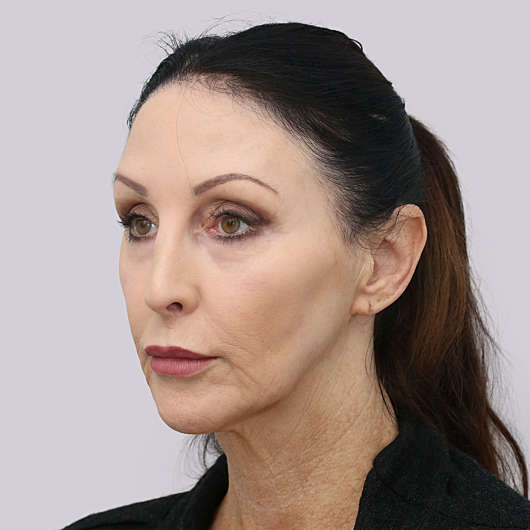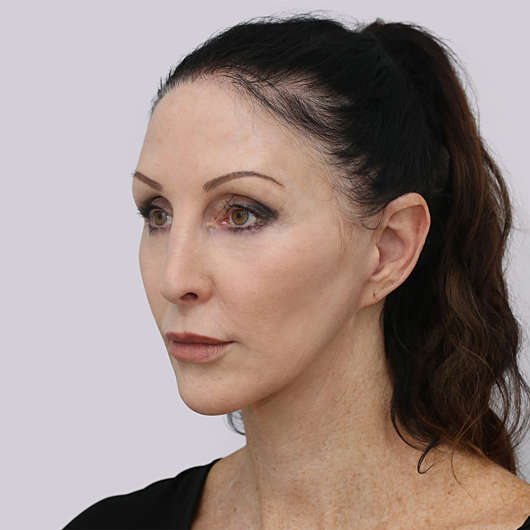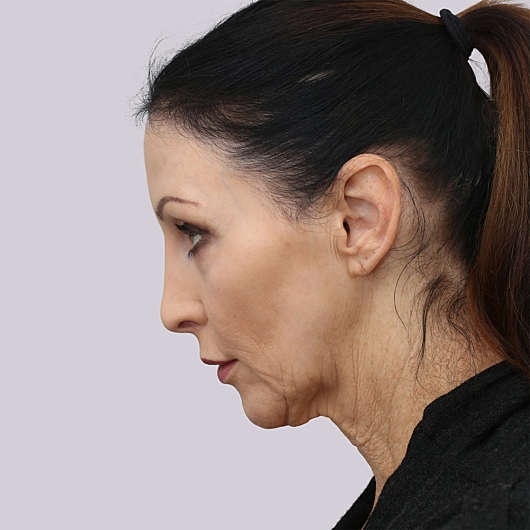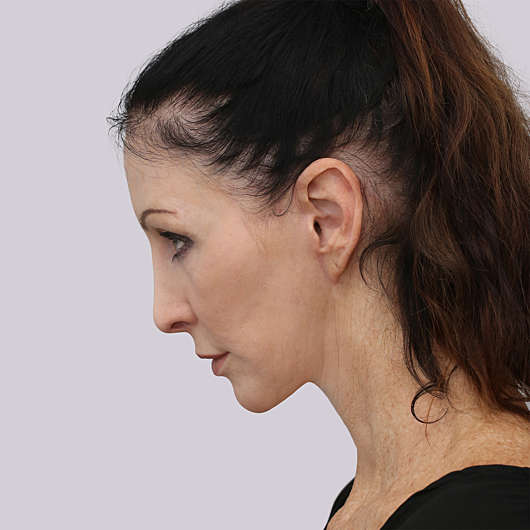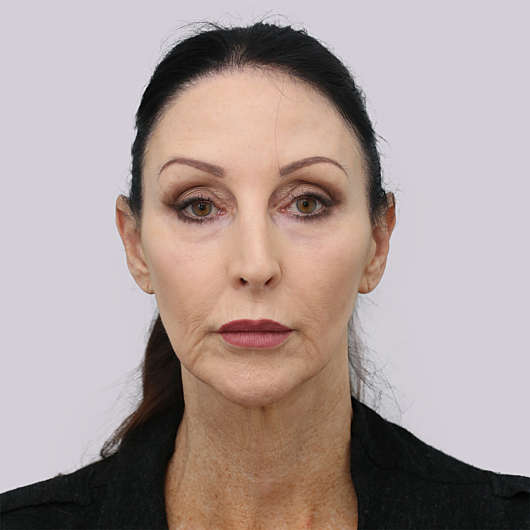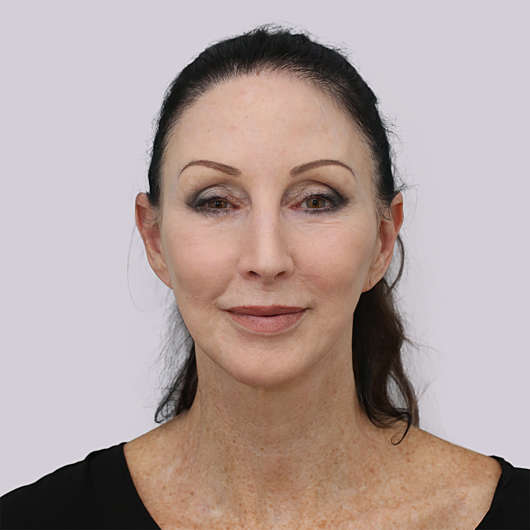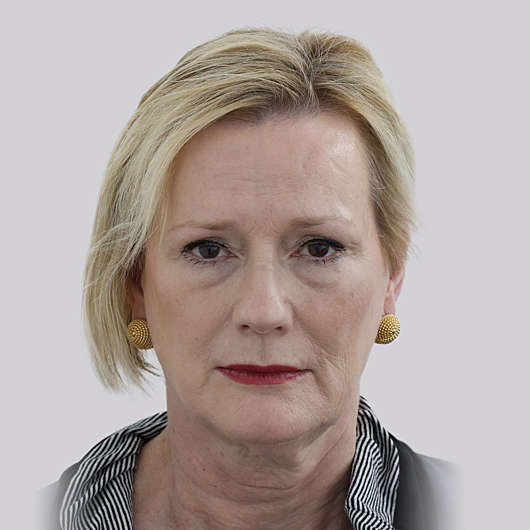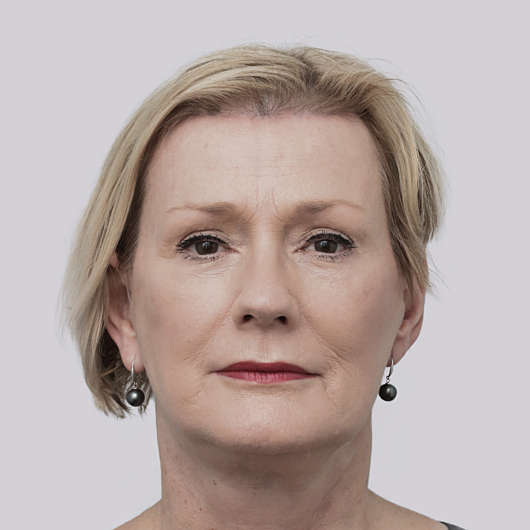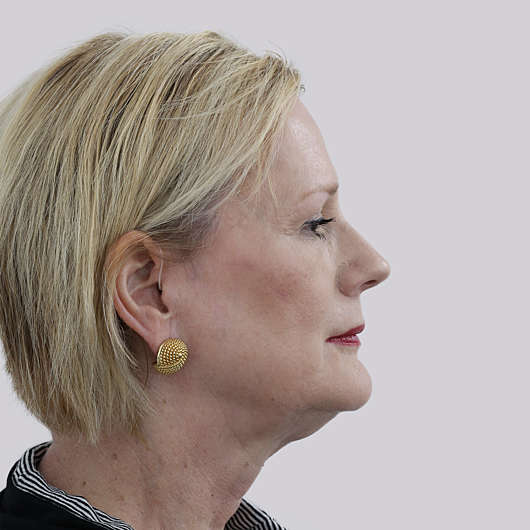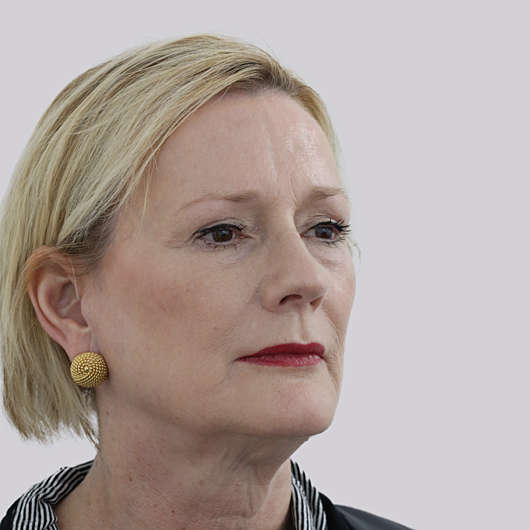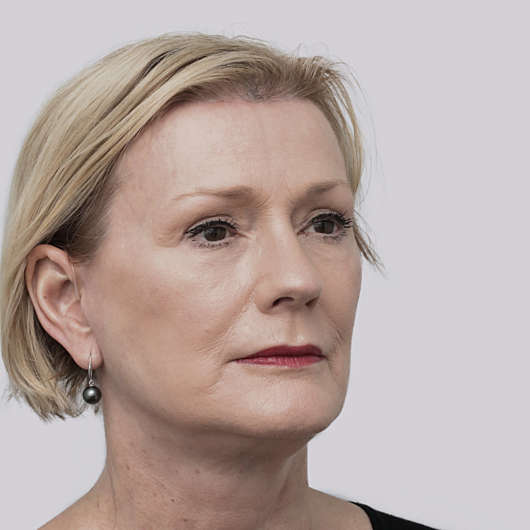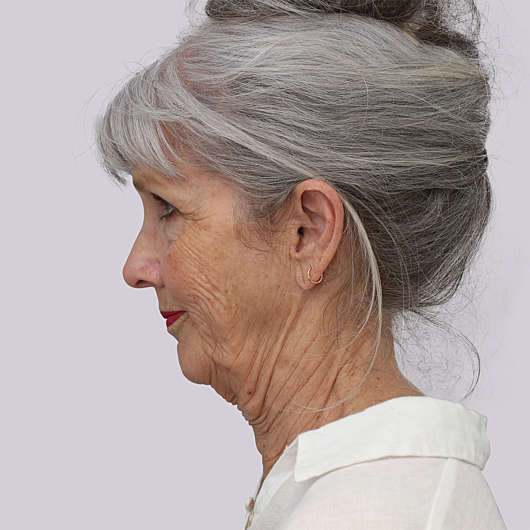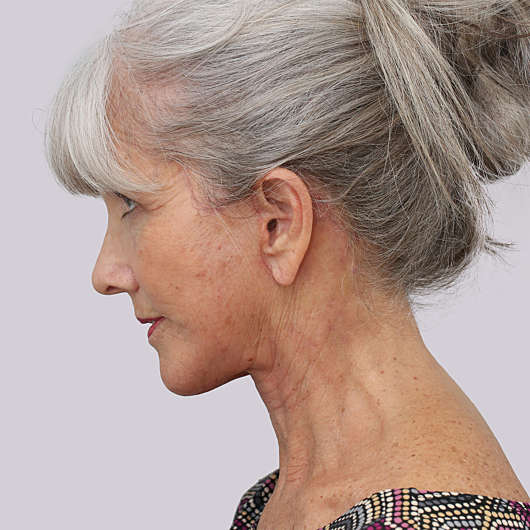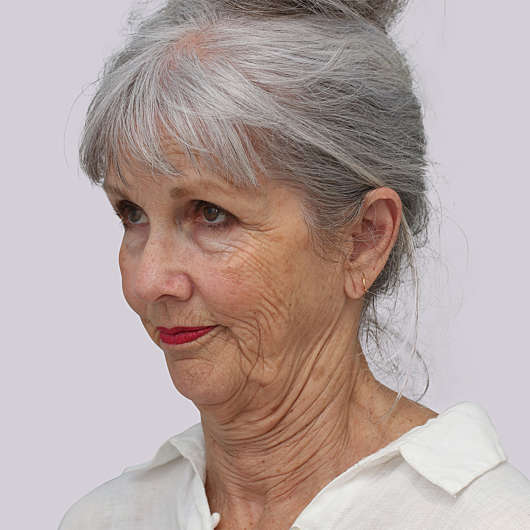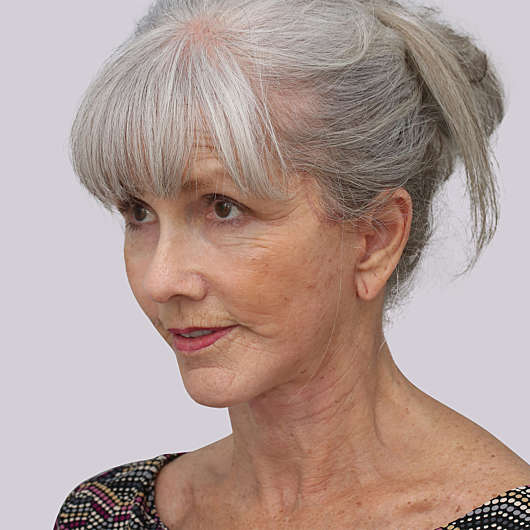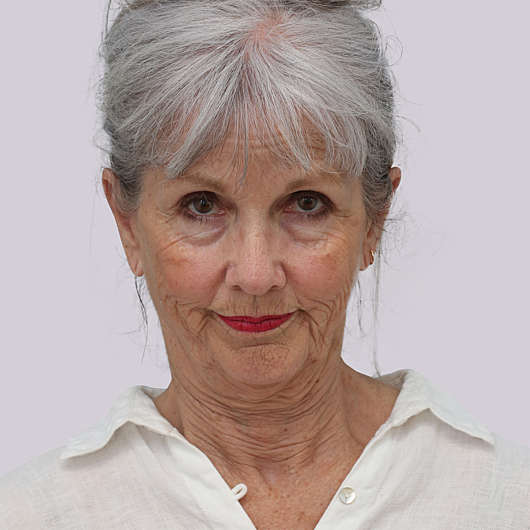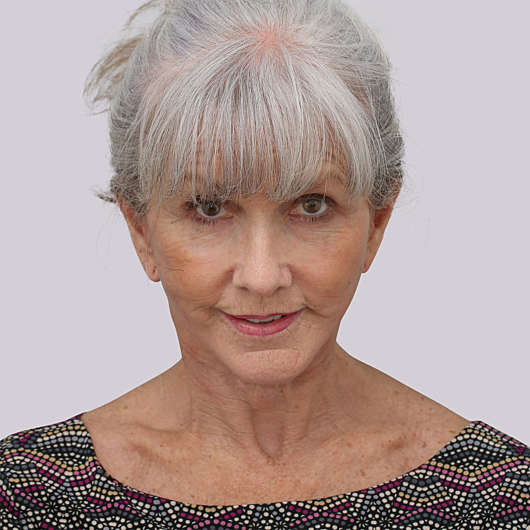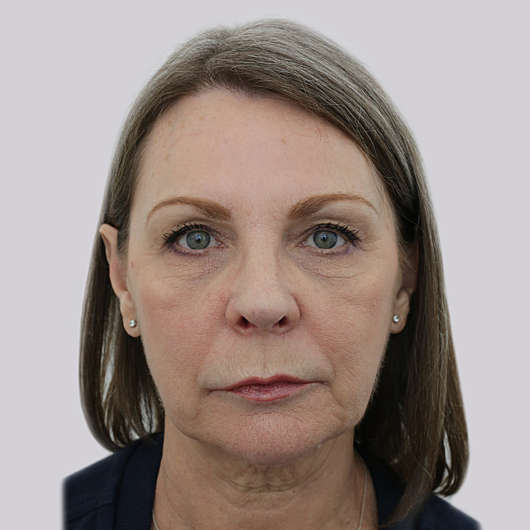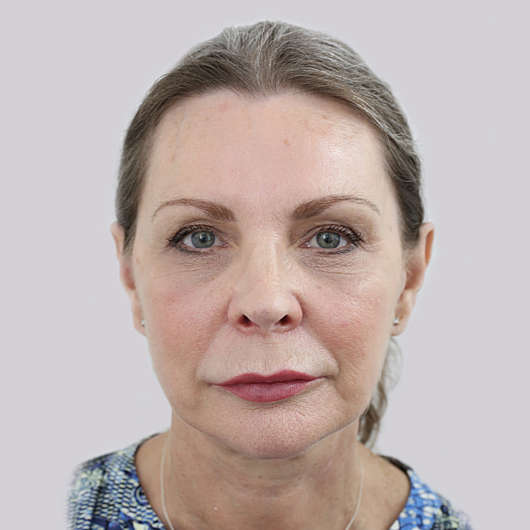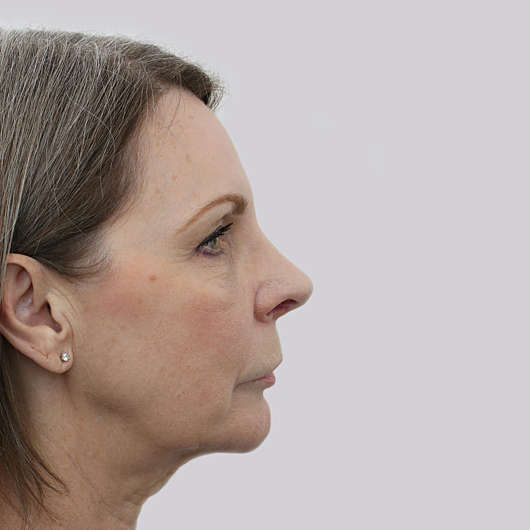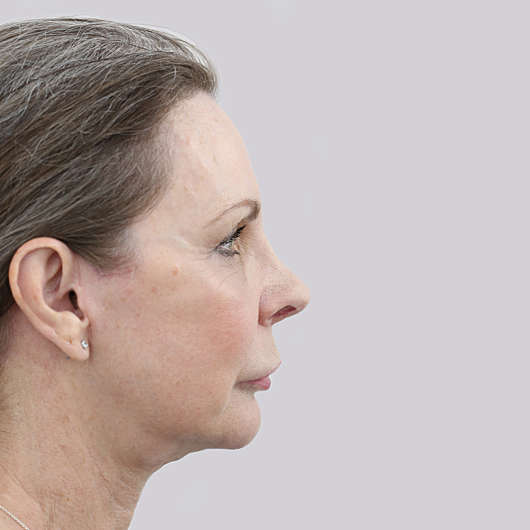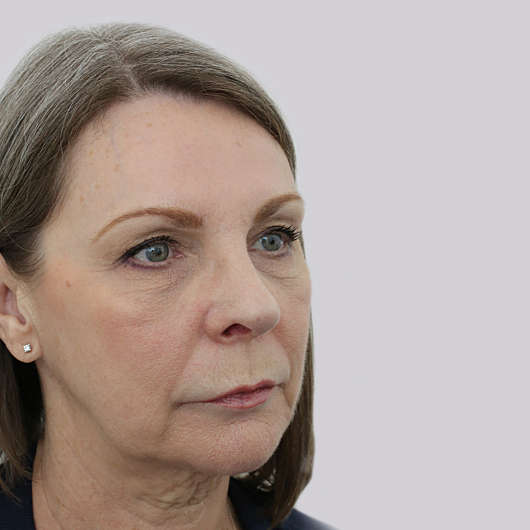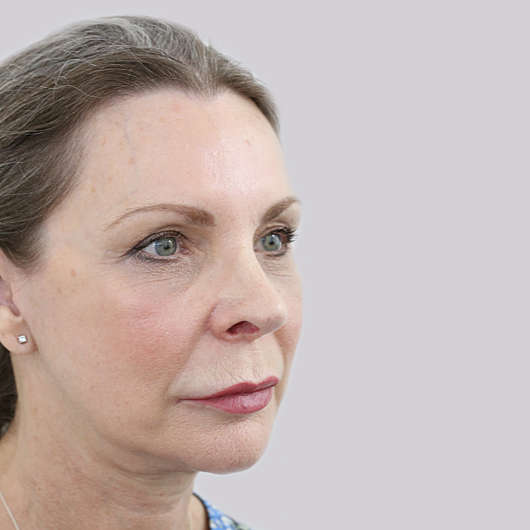
Facelift Surgery
As we age, the effects of sun exposure, gravity, aging and the stresses of everyday life can be seen on our faces and jaw lines. Folds and fat deposits appear around the neck, the jaw line grows slack, and creases form between the mouth and nose. Men and women whose face and neck are beginning to droop, but still have some elasticity in their skin and a well-defined bone structure, are good candidates for facelift surgery.
Minor and less invasive medical procedures such as injectable fillers, protein rich plasma injections (PRP), ultrasound therapy and radiofrequency treatments etc. can create variable improvements in the aging face and skin. However, there is only limited benefit when it comes to addressing established aging signs such as jowls, marionette lines, submental fat deposits and significant skin laxity in the face and neck. This is where a facelift is the absolute best option for rejuvenation.
To attain the best results possible, Dr Ha recommends total facial rejuvenation. This often involves combining facelift surgery with other procedures such as a browlift, upper and lower eyelid surgery, and a necklift. Dr Ha is a skilled and qualified surgeon with extensive experience in facelift and necklift surgery. He is able to pinpoint and treat all problem areas of the brow, eyes, face and neck.
Types of Facelifts
Generally speaking; minor facelifts produce minor results, whereas the major facelifts deliver major results. The quality and longevity of the results are also reflected in the complexity of the surgery. The main facelifts performed include:
- Mini facelift and S-lift
- Mini facelift with SMAS plication
- SMAS lift
- Deep plane facelift
Basic Facelifts
Traditional facelift procedures often produce the classical stretched, wind-swept operated appearance. This is often seen with procedures such as mini-lifts and S-lifts, in which only skin is lifted and removed. Results are often short lived, faces often appear unnatural and the scars often very visible.
This type of a lift also does little to address the jowls, marionette lines, jawline and neck. It tends to be more useful in the younger patient with early signs of aging.
Advanced Facelifts
More modern and advanced facelifting techniques aim to elevate and reposition the deeper underlying tissues of the face. The superficial musculo-aponeurotic system (SMAS) is a fibrous connective tissue layer found beneath the skin and facial fat layer. Elevation of this layer of tissue is vital in achieving a natural facelift result.
A SMAS facelift is considered to be the common standard facelift by most facial plastic surgeons. Addressing the SMAS produces a more natural result and is longer lasting than a skin only lift, however, there are still often inherent issues with unevenness, lumpiness of some skin pulling may still be required.
The Deep Plane Facelift goes just below the SMAS layer and further forwards in the face towards the naso-labial fold (groove between the nose and mouth). When the facial tissues are elevated in this plane, the skin and overlying tissues are able to repositioned in a more vertical orientation. This improves mid-face volume, angles at the corner of the mouth, lines surrounding the mouth, jowls and sharpens the jaw lines. Ultimately, it produces a very natural rejuvenation that will last longer.
Dr Ha has performed over one hundred comprehensive Deep Plane Facelifts. This is a highly technical and skilled operation which only few surgeons across Australia truly perform. It is considered to be one of the most advanced facelifting procedures. The deep plane facelift is performed in conjunction with a neck lift. Carefully designed incisions are placed around the ear and underneath the chin. The skin and sub-SMAS layers are meticulously elevated. The SMAS can then be accurately repositioned and secured. Excess skin is trimmed and an absolute tension free closure of the wounds allows for very minimal scarring.
Facelift Before & After
The Facelift Journey
Initial Enquiry
The decision to have facial surgery is one of the biggest decisions you will ever make. It is often a very daunting and scary process for most people. Rest assured you are not alone and all clients go through similar emotions. Dr Ha and his team do their absolute best to make this process as straightforward, un-intimidating and smooth as possible.
You can initially touch base by either emailing us via contact form, or by simply calling our North Adelaide Office on (08) 8267 2133. One of our friendly staff will assist you with booking a consultation or any questions from there.
Consultation Process
Dr Ha consults from his rooms in North Adelaide, South Australia. The initial facelift consultation will take an hour. During this consultation, Dr Ha will perform a detailed assessment of your face and neck. He will discuss your concerns and goals, and then make recommendations on which procedures are required to attain the best facial rejuvenation results possible. The consultation process also involves discussion of the procedure, post-operative recovery, common risks, aftercare and costs involved. You will have the opportunity to view before and after photos of previous patients at different stages of their recovery and their final long-term outcomes. Clients are welcome to re-book further appointments if they have any further concerns or need further clarification.
Facelift procedures are considered cosmetic. APHRA guidelines stipulate that a GP referral is required prior to surgery.
Facelift Consultation With Jennie
Booking Surgery
Surgery bookings are usually taken 2 - 3 months in advance. Operation dates can be discussed during your initial consultation or at a later date once you have decided to proceed with surgery. Dr Ha’s friendly staff will always try to accommodate a convenient timeframe for your procedure and recovery.
Once you have confirmed your surgery date, our nursing staff will liaise closely with you regarding all other aspects of the pre-operative process. A pre-operative appointment with Dr Ha will be made for you 2 weeks prior to your operation to ensure you are completely prepared for your procedure.
Day of Surgery
Patients are admitted the morning of surgery. Surgery is performed under general anaesthetic, in a private and fully accredited overnight hospital. Surgery usually takes between 4-8 hours depending on the procedures required. Patients usually stay in hospital overnight and are discharged home the following day with detailed instructions for aftercare and support. It is recommended that you have some support around the home for the first 48hrs.
Facelift Surgery With Jennie
Recovery
Recovery from a facelift procedure is generally straightforward and predictable. Generally speaking, this procedure is not painful. It is expected that patients feel discomfort, swelling, bruising and tightness. A compressive head dressing is applied for the first 3 days and this will then be changed to a face/neck compression garment; which is then worn for 2 weeks.
Most patients return to work within 3 weeks following surgery. At this stage, almost all bruising has settled. Make-up/foundation may be applied to the face to disguise any bruising.
Facelift Recovery With Jennie
Outcomes and Results
Results vary from patient to patient due to many factors including the individuals genetics, diet, quality and health of their skin, smoking history, history of previous surgery & facial treatments, and many other factors.
Scars are usually not noticeable after enough time has passed for them to mature. In any case, they are easily disguised in natural skin creases, by the hair, or, in persistent cases, by makeup until total healing has occurred.
Most clients will feel quite comfortable returning to their social environments by 3 weeks. There is often some mild residual facial swelling for 3 months. Final results are best assessed at 6 to 9 months following surgery.
The longevity of results depends largely on the type of facelift procedure performed. Dr Ha believes that a deep plane facelift will give you the best long-term results. Naturally, your face is not expected to be “frozen in time,” we would expect aging changes to still occur, albeit at a slower pace.
Expected changes to the face after a Deep Plane Facelift include:
- Improved facial cheek volume
- Improvements in the down-turning of the corners of the mouth (oral commissures)
- Reduction in the creases and folds around the mouth (marionette lines)
- Elimination of the jowls
- More definition of the jawline
- Improvements in skin wrinkling of the face and overall improved radiance of the facial skin
Expected changes in the neck with a combined Necklift include:
- Reduction of accumulated fat (submental fat) under the chin.
- Tightening of loose neck skin folds
- Improvements in wrinkling and fines lines of neck skin
- Improvements of platysmal bands
Facelift Before & After
Interstate and Overseas Clients
Dr Ha commonly sees and performs facelift procedures interstate and overseas. Initial consultations can be performed via video link (Zoom, Apple Facetime, Whatsapp, or Skype). Booking schedules can then be discussed. Initial contact can be made via the contact form.
Clients will normally be seen a few days prior to their procedure. Following their surgery, most patients will stay in Adelaide or the surrounding areas for 10-14 days prior to returning home. Adelaide is a beautiful and affordable city in Southern Australia. Further information on Adelaide can be found on the South Australia tourism website.
The Right Facelift Surgeon for You
Not all surgeons are the same. Facelift surgery is extremely technical and intricate, and it's imperative that you choose the best surgeon you can find. Important aspects to consider include:
- the surgeons training and qualifications;
- experience in facelifts and other facial rejuvenation surgery;
- previous results and patient experiences;
- your surgeons’ persona and communication skills; and
- his or her reputation.
Information on facelift surgery is abundant and freely available online. Individual surgeons websites are a useful resource to investigate their experience, training/ qualifications and to see before and after photos. There are numerous independent and very comprehensive online review sites such as RealSelf. These sites are simple to navigate, contain a wealth of information and will give you insight into other patient’s cosmetic journey experiences and results with their facelift procedure.
Finally, if you are considering surgery, you have to feel completely comfortable and confident with your surgeon. Consider seeing a few surgeons and have a close look at their before and after results. Ensure the surgeon has the correct qualifications, training, and experience in performing the procedures you are after, and that they perform these regularly with good patient feedback. Try to find examples of previous clients that have similar issues to yours and whether you would be happy with their outcomes.
The majority of facelift surgeons perform basic facelifts (mini facelift, S lift, Mac Lift, limited scar facelifts). Only a few surgeons are trained and have the experience to perform more advanced facelifts such as a deep plane facelift. Dr Ha is an Australian trained and accredited Specialist Otolaryngologist (ENT), Head and Neck Surgeon. Dr Ha is a Fellow of the Royal Australasian College of Surgeons (FRACS). He has completed sub-specialty training in Facial Plastic Surgery; in particular Rhinoplasty and Face and necklift surgery. Dr Ha has performed over 100 hundred of comprehensive deep plane Facelift and Necklift procedures, both primary and revision surgery. Thes are performed on a weekly basis and he has a comprehensive portfolio of successful results and very happy patients.

Dr Ha is an Australian trained and accredited Specialist Otolaryngologist (ENT) Head and Neck Surgeon. He is a highly regarded expert in Rhinoplasty, Facelift surgery and Facial Plastic Surgery.
